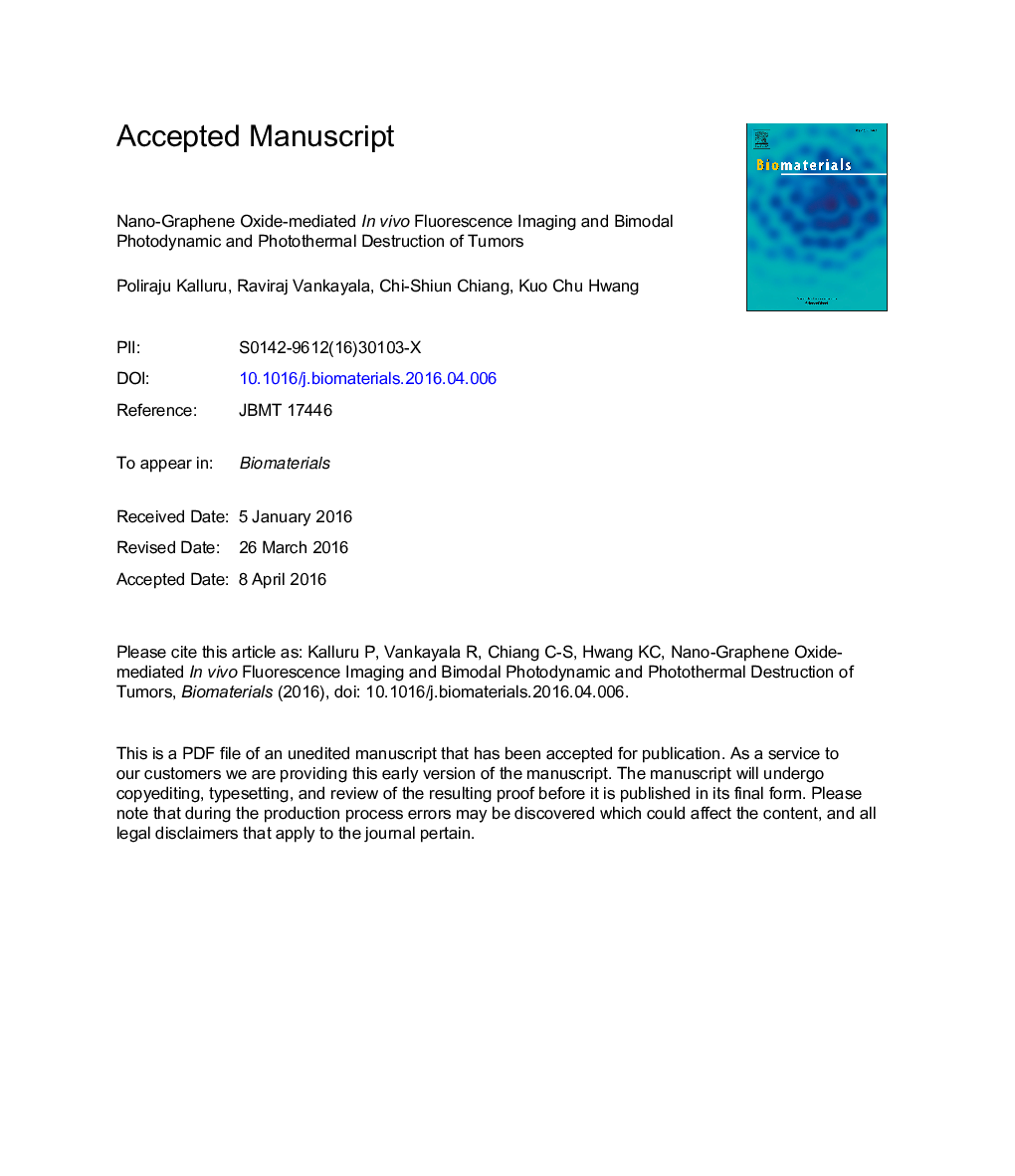| Article ID | Journal | Published Year | Pages | File Type |
|---|---|---|---|---|
| 6484974 | Biomaterials | 2016 | 34 Pages |
Abstract
Cancer is one of the major life-threatening diseases among human beings. Developing a simple, cost-effective and biocompatible approach to treat cancers using ultra-low doses of light is a grand challenge in clinical cancer treatments. In this study, we report for the first time that nano-sized graphene oxide (GO) exhibits single-photon excitation wavelength dependent photoluminescence in the visible and short near-infrared (NIR) region, suitable for in vivo multi-color fluorescence imaging. We also demonstrate in both in vitro and in vivo experiments to show that nano GO can sensitize the formation of singlet oxygen to exert combined nanomaterial-mediated photodynamic therapeutic (NmPDT) and photothermal therapy (NmPTT) effects on the destruction of B16F0 melanoma tumors in mice using ultra-low doses (â¼0.36 W/cm2) of NIR (980 nm) light. The average half-life span of the mice treated by the GO-PEG-folate-mediated NmPDT effects is beyond 30 days, which is â¼1.8 times longer than the mice treated with doxorubicin (17 days). Overall, the current study points out a successful example of using GO-PEG-folate nanocomposite as a theranostic nanomedicine to exert simultaneously in vivo fluorescent imaging as well as combined NmPDT and NmPTT effects for clinical cancer treatments.
Related Topics
Physical Sciences and Engineering
Chemical Engineering
Bioengineering
Authors
Poliraju Kalluru, Raviraj Vankayala, Chi-Shiun Chiang, Kuo Chu Hwang,
